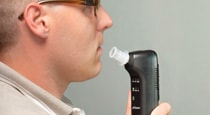 Even when we do our best to make responsible choices, there are times when temptation or ignorance gets the best of us. A drunk driving charge is a perfect example of how certain behaviors can get out of control. But, there you are, standing before a judge in a courtroom, and you’ve just been ordered to install an ignition interlock device on your vehicle because of your drunk driving conviction.
Even when we do our best to make responsible choices, there are times when temptation or ignorance gets the best of us. A drunk driving charge is a perfect example of how certain behaviors can get out of control. But, there you are, standing before a judge in a courtroom, and you’ve just been ordered to install an ignition interlock device on your vehicle because of your drunk driving conviction.
What is an ignition interlock device, and how does it help after a drunk driving conviction?
- An ignition interlock device, or IID, is a two-piece unit that attaches to your car’s engine and ignition switch.
- When you attempt to start your car, your IID will prompt you to test your blood alcohol concentration (BAC) through a simple breath test to prove you are sober before driving.
- Once you pass the initial breath test, your IID will require you to keep testing your BAC periodically, as you drive.
- If you do not pass either the initial BAC test or the test while the car is in motion (also known as a “rolling re-test), your car will either not start or you will have to pull over your car and try the test again.
- If you are in an “ignition interlock lockout” mode, that means your BAC is too high and that you are not sober enough to drive.
Your ignition interlock device is there to keep you driving, even though you have been convicted of drunk driving. While the devices may not be on anyone’s gadget “wish list,” they are great alternatives to having suspended driving privileges and the hassle of bumming rides or finding a different way to get around without your car. Plus, an ignition interlock device ensures everyone on the road that you are not able to make the same choice to drink and drive again. Since an estimated 50-75% of people with a suspended license due to a DUI or other alcohol-related conviction continue to drive their vehicle, an IID assures everyone that you are safe and sober behind the wheel.

Leave a Reply
You must be logged in to post a comment.